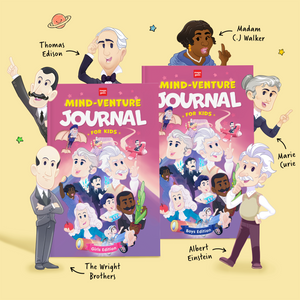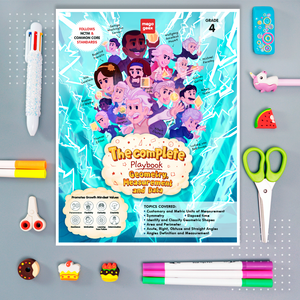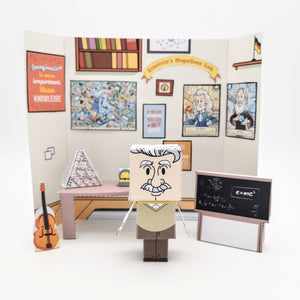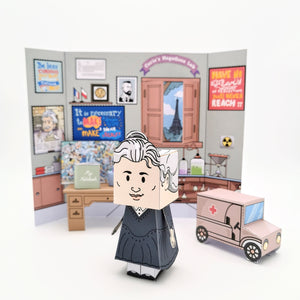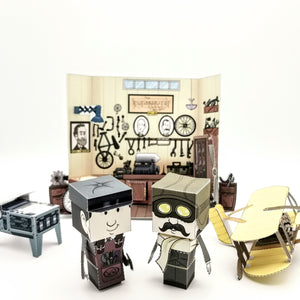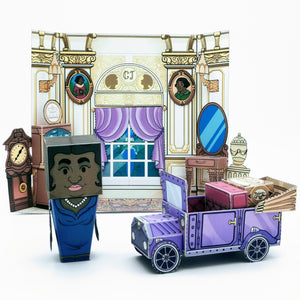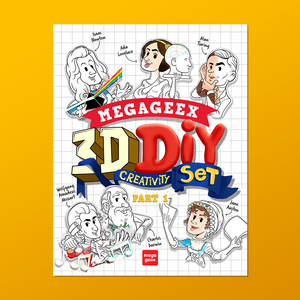Galileo Galilei
Born: February 15, 1564
Died: January 8, 1642 (age: 77)
Nationality: Italy
Education: University of Pisa
Occupation: Astronomer, Engineer, Physicist
Best known as: The Father of Modern Science and Observational Astronomy
Imagine having a debate with your brother or sister or classmate--that’s one thing. Now imagine a man, Galileo Galilei, having a dispute with a whole church in the early 1600s. Not a church building, but an entire group of powerful people around the world who believe that the Earth is the center of the universe, while you know it’s the Sun. But Galilei kept asking questions and fought for what he believed. In the end, he was arrested and put on trial for his beliefs under the dreaded Inquisition. The Church asked Galilei to take back what he had said. He didn’t back down and spent the last ten years of his life under house arrest.
How Galileo almost became the world’s most famous…. Doctor!
Galileo was born in the Italian city of Pisa during the Renaissance. His father was not only a music teacher but a famous lute player. His parents and siblings moved to the city of Florence when Galileo was eight. He was left behind for two years to live with a relative. He became an accomplished musician and an outstanding student. After attending school at a monastery, Galileo thought he’d be a priest. But his father did not like this idea. According to his dad`s wish, he trained to become a medical doctor. He fell in love with mathematics and geometry during his medical training, and the rest is history. Galileo decided he would become a mathematician.
The Method of A Real Scientist
At that time, in Italy and across Europe, the idea of a scientist was different from today. Educated people studied the classic works of great philosophers like Aristotle. But few asked questions, and most accepted traditional thinking. That didn’t suit young Galilei. He started to create experiments that allowed him to form a hypothesis (an idea to check), observe the physical behavior of things, and test traditional thinking.You can already guess that he found some old theories to be incorrect. When experimenting, following these steps was the beginning of what we now call “The Scientific Method.” This procedure is still in use today.
Living in Pisa, he once carried two balls to the top of the world-famous tower. He wanted to test the existing theory that two metal balls of different weights would reach the ground at different times when dropped. Galileo let the metal balls fall at the same time, and what did he find? They reached the ground at exactly the same time! He did it again, and the same thing happened. More questions came gushing out of Galilei’s brain. He was also busy creating a military compass and a thermometer.
Going against popular opinion
Not everybody was happy with Galilei’s experiments, however. They rocked the boat, or disturbed the established order. When Galileo challenged the belief that the Earth was not the center of the universe, many influential leaders were displeased. Copernicus, an earlier astronomer, claimed this to be true. Instead, Galileo believed the Sun was at the center of things. The telescope, made first in Holland, came to the Italian’s attention. He proceeded to build his own, at 30 times magnification, not just three, and more capable than ever before. Galileo’s telescope allowed him to see Jupiter and discover four of its largest moons in orbit. He learned that our Moon wasn’t smooth either, as was believed. He learned that the Moon had many rough craters and mountains. We know today this is correct.
Since Galilei’s curiosity continued to burn, he was soon in more trouble with the colossal Catholic Church. His and other scientists’ more accurate “heliocentric model” of the universe, with the Sun at its core, caused too much disruption. The Church pushed Galilei to “recant” or take back what he said, or he would die. In the end, Galilei was forced to recant, which made him mutter his famous quote: “And yet it moves!” He was referring to the Earth's movement around the Sun. After his trial, Galileo lived out his life under house arrest. He was a prisoner in his very own home, but that didn't stop him from writing his best work titled, "Two New Sciences," about kinematics and the strength of materials. This final book summarized everything that he had learned in his life and gave him the title "the Father of Modern Physics."
4 Mega-Fantastic Facts about Galileo Galilei
- As the years went by, the mighty Catholic Church modified their views on Galileo.They finally said they were sorry about how he was treated.
- Galileo refused to believe Johannes Kepler’s theory that the Moon caused ocean tides. Instead, he claimed it was a result of the Earth’s rotation. In this case, our man was wrong. Even the best make mistakes.
- One year before he died, while he was going blind, he invented a pendulum to keep time.
- Even though Galilei was the father of three kids, he never got married.

